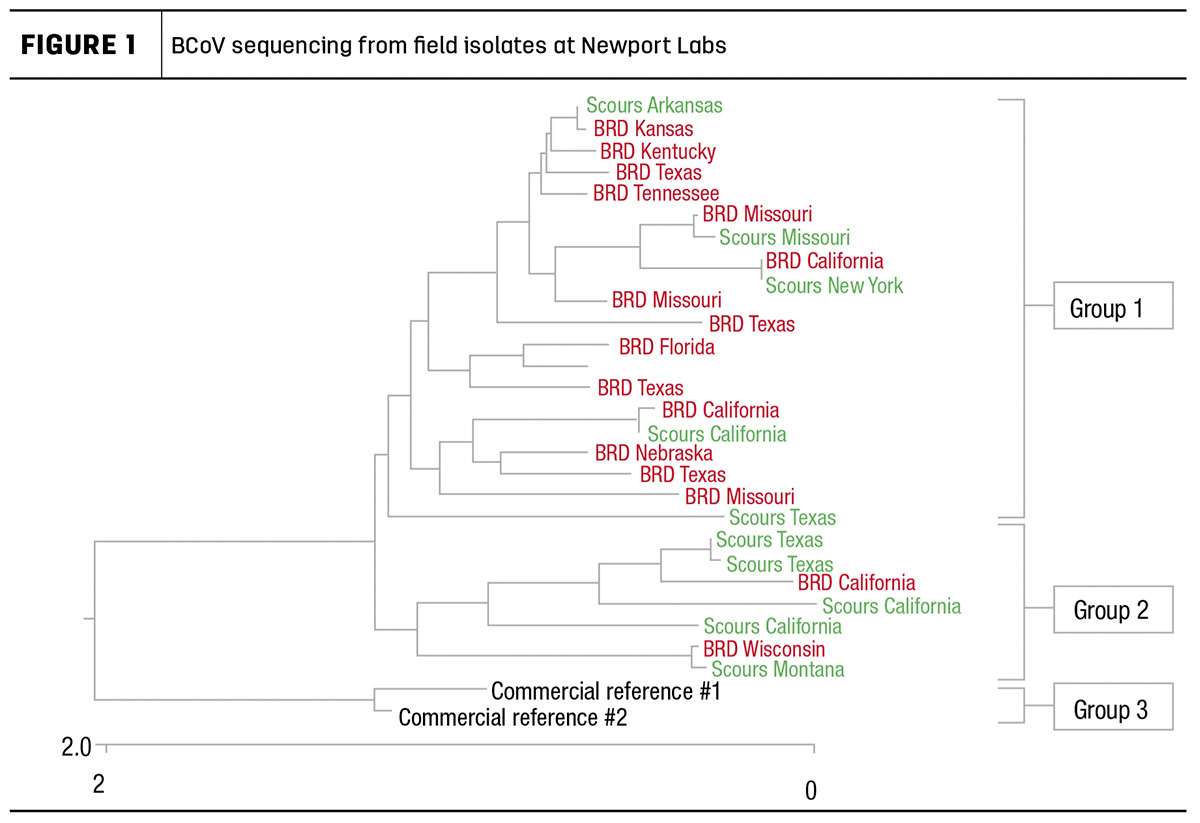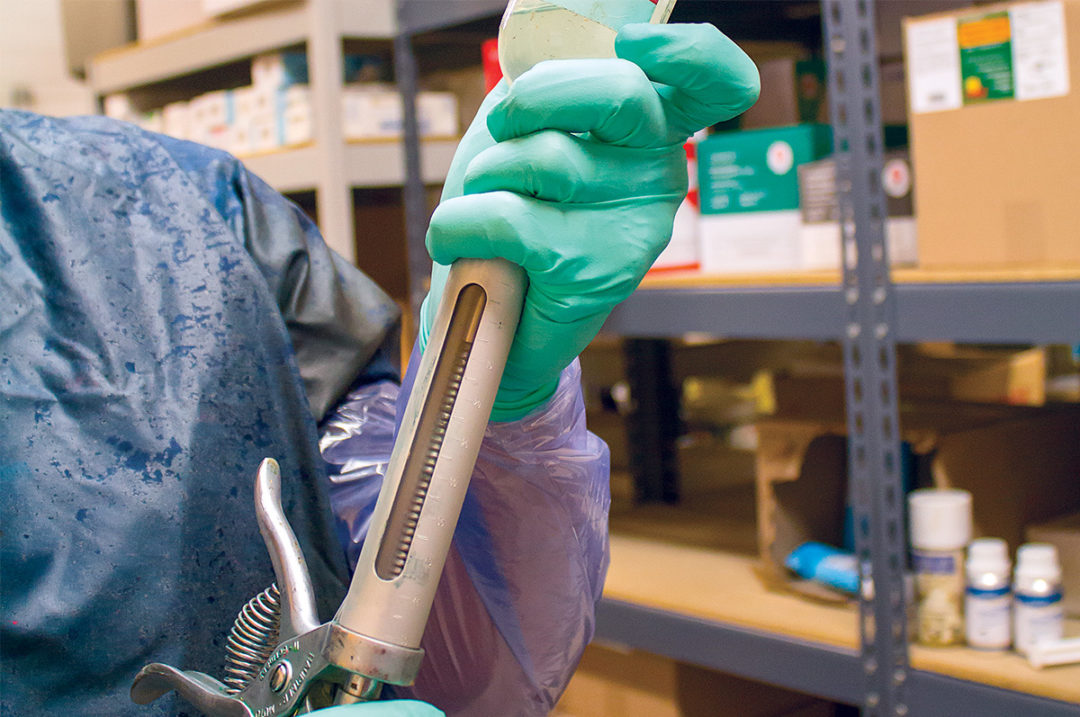We have all become more educated on coronavirus in general over the past few years, whether we wanted to be or not. However, dairy producers have been dealing with health issues from coronavirus in their herds for quite some time.
Bovine coronavirus was first associated with calf scours and winter dysentery in the early 1970s and bovine respiratory disease (BRD) in the 1980s. Bovine coronavirus is an RNA virus that targets the respiratory tract and intestinal tract for replication. Replication of bovine coronavirus in these tissues is often associated with respiratory disease in calves, calf scours and winter dysentery in dairy cows.
Infections of bovine coronavirus are usually mild to moderate in severity, as the virus doesn’t seem to damage the host cells as significantly as other more pathogenic viruses. However, infections of bovine coronavirus can become severe in cattle that are overcrowded, on a poor plane of nutrition or stressed from commingling and movement.
There can be strain variation in bovine coronavirus isolates associated with respiratory disease and intestinal disease. Whole genome sequencing can be used to determine variation in the spike protein, which is the structure bovine coronavirus uses to attach and invade host cells. The differences in these spike proteins could allow the BCoV strains to preferentially select cells in the respiratory tract or intestinal tract for replication.
Figure 1 shows the genetically similar isolates in Group 1 are found mostly in BRD. The isolates in Group 2 have similar spike proteins and are mostly associated with calf scours. The isolates in Group 3 are comparable to those found in commercial vaccines. The figure shows that the field isolates from Group 1 and 2 are more genetically similar to each other than they are to the commercial isolates in Group 3. This might explain the breakthrough scours cases in commercially vaccinated calves and the lack of a commercial respiratory vaccine for bovine coronavirus.
 Click on the image above to view it at full size in a new window.
Click on the image above to view it at full size in a new window.
Respiratory disease
Bovine coronavirus is associated with approximately 33% of all BRD cases. Calves with BRD initiated by bovine coronavirus present with nasal discharge, watery or crusty eyes, coughing and fever. Excessive nasal discharge and blood-tinged manure have also been reported in confirmed bovine coronavirus respiratory infections. Respiratory breaks from bovine coronavirus are usually characterized with high treatment rates and very low death rates. This is what sets bovine coronavirus apart from other BRD viruses like bovine diarrhea virus (BVDV) and bovine respiratory syncytial virus (BRSV), which can have both high treatment and death rates. BRD cases from bovine coronavirus are mainly seen in recently commingled animals, either in post-weaning calves, regrouped 4-to-6-month calves or after transportation to or from a calf raiser.
Diagnostic sampling should be considered anytime treatments exceed the facility’s tolerance level. Sampling of early onset, non-treated calves should include nasal swabs for detection of viral pathogens and deep naso-pharyngeal swabs for detection of bacteria. Necropsy samples should be collected on any acute deads that have not been treated. Calves that die within one day of treatment are sufficient, but calves treated multiple times over a period of days or weeks should not be submitted for a diagnostic workup. Work with your veterinarian to create a sampling protocol. Submitting nasal swabs and tissue from the trachea and lung for PCR testing will increase identifying common BRD viruses. Calves that have blood-tinged manure should also be tested for bovine coronavirus and coccidiosis with fecal samples.
Preventing BRD from bovine coronavirus starts with grouping healthy calves, keeping the new pens and waterers clean, and considering vaccination. There are currently no respiratory vaccines labeled for bovine coronavirus. However, there is an opportunity to use a custom vaccine created specifically for bovine coronavirus. A veterinarian can create custom vaccines if they have identified and isolated bovine coronavirus from your facility or one nearby. These custom vaccines are usually implemented four to six weeks prior to commingling to be successful.
Dairy operations that raise their own calves will have fewer bovine coronavirus strains present. However, calf operations that source calves from many different sites and regions could see significant strain variation in their bovine coronavirus isolates. Genetic sequencing is warranted on these larger operations to assess this risk when building a custom bovine coronavirus vaccine.
Treatment should focus on secondary bacterial infection, as no current products are available to treat viral infection.
Calf scours
Calf scours is the most common form of bovine coronavirus infection in dairy cattle. Calves are affected within the first three weeks of life, with cases peaking around 5 to 15 days old. The virus targets the intestinal cells of the small intestine and colon. Bovine coronavirus replication causes significant damage to the intestinal villi which decreases the calf’s ability to absorb nutrients from its diet. The virus is also shed at a very high rate in the feces and leads to further contamination of the environment.
Prevention of scours from bovine coronavirus should focus on reducing environmental contamination by keeping maternity areas clean and removing calves as soon as possible after parturition. Calves should also be moved into clean and rested housing. Maternal antibodies administered through colostrum can also help reduce the risk of calf scours. The dam must be vaccinated in the dry period with an appropriate strain of bovine coronavirus, using either a commercial or custom scours vaccine, to get adequate antibodies in the colostrum.
Bovine coronavirus is just one of many pathogens that causes scours in young dairy calves. Other pathogens such as rotavirus, E. coli, Salmonella sp., Clostridium perfringens Type A, cryptosporidium, etc., can also cause scours in the same age range and with similar signs. Fecal samples sent to a veterinary diagnostic lab can assess your viral, bacterial and parasite risk in most scours cases. Necropsy tissues can also be helpful where mortalities are involved. Consult with your veterinarian to determine an appropriate diagnostic approach to your scours issues.
If you have dairy cattle, then you likely also have bovine coronavirus. It is important to perform diagnostics to identify your risk and manage accordingly. Bovine coronavirus infections are frustrating in dairy calves. Most calves are challenged within the first weeks of life and create antibodies for bovine coronavirus after recovery. However, these same calves are susceptible again to bovine coronavirus in the respiratory tract when grouped after weaning. This means that either the duration of immunity is very short for young calves or antibodies for scours bovine coronavirus do not cross-protect for respiratory bovine coronavirus.
There is an opportunity to booster acquired immunity and improve cross-protection with a custom vaccine. Custom vaccines are created from isolates associated with your facility by your veterinarian. These vaccines are injectable and create the desired immune response to address bovine coronavirus and potentially reduce the risk of bovine coronavirus in your calves. Consult with your veterinarian to see if this option fits your calf health plan.







